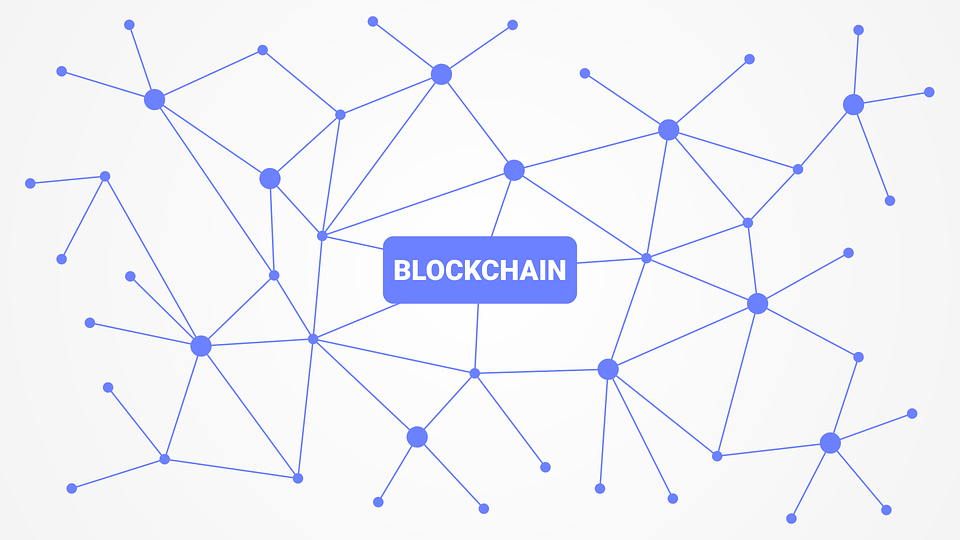The 11 Most Common Blockchain Myths Blockchain Development Service, Cubix

Introduction.
The rapid boost and subsequent collapse in the value of bitcoin over the previous year. You’ve probably heard a lot about blockchain technology. Unfortunately, most of what you’ve heard might not be entirely accurate.
The main reason why myths are spread is that the word ‘blockchain’ is becoming a buzzword. Giving a golden touch to everything associated with it.
For example, as Bloomberg stated last October, a British firm named On-line Plc raised its share price that increased by almost 400 percent, when it changed its name to On-line Blockchain Plc.
As a result, the seemingly infinite advantages of blockchain development service and technology have contributed to a steady stream of uncertainty and misinformation.
So, What Is Blockchain Technology?
Blockchain is a digital log file that maintains online transactions secure. From the layman’s point of view, a blockchain is the best thought of a shared digital ledger on which each transaction is documented. Blockchains are using cryptography to encrypt and secure transactions.
The core concept of blockchain is that blockchain is open-source. It means that anyone computer or laptop and had sufficient free space can download it.
For instance, your PC has sufficient storage space. You can easily head over to the Bitcoin site and download Bitcoin Core on your computer. If you have a good internet speed, storage space for full blockchain. Your computer can aid and strengthen the Bitcoin website.
Although blockchain technology has a lot of positive advantages, misunderstandings and confusion are widespread. Here are 11 blockchain technology myths you’re likely to believe. How many of you fell for?
Myth 1: There Is Only One Blockchain
The launch of the Bitcoin White Paper in 2008 marked the arrival of the first peer-to-peer (P2P) digital money (electronic cash) network in the world. As Bitcoin was the first cryptocurrency, several people believe that there is just one blockchain.
The 1514 cryptocurrencies are registered on the Coin market. At the time of writing cryptocurrencies, each of them exists on their own blockchain except for IOTA. They are recognized as public blockchains because everyone is allowed to interact with them.
Myth 2. All Blockchains Are Public
Although blockchains were first visualized in late 1991, several people are familiar with global public blockchains, such as bitcoin, which was launched in 2008.
This is only one form of blockchain. You may have private or hybrid blockchains as well. If you want, you can also have your private blockchain participate with public blockchains likewise.
You can see right after the launch of bitcoin banks, and other private institutions created a controlled type of blockchain, which is known as Allowed or Authorized blockchain. These blockchains are different from public or local blockchains.
Because each member of an Allowed blockchain is part of the same company, those are known as personal blockchains. But several peoples are unhappy to use the term blockchain to them. The distributed ledger tech commonly using this word.
Myth 3. All Cryptocurrencies Use Blockchain Technology
With a large number of bitcoin news and reports, you could be forgiven for thinking that blockchain technology is vital to all cryptocurrencies.
Currently, one cryptocurrency named IOTA is blockchain-less. IOTA uses a guided acyclic graph, else known as a ‘Tangle’ for security purposes. It’s a directed graph that doesn’t contain any cycles.
Myth 4: Blockchains Are Cloud-Based Databases
A common misunderstanding about blockchain technology is that blockchains are cloud-based databases. In reality, blockchains have to be downloaded and run-on internet-enabled computers worldwide to operate. Any device that runs a blockchain is referred to as a network node.
Offered that the computer is kept running with better internet connectivity. It aids in supporting whichever blockchain system it is in the operational phase.
Myth 5: Blockchains Cannot Be Hacked
Many blockchains, such as the bitcoin blockchain, are secured by the SHA-256 cryptographic hash algorithm. Initially developed by the United States National Security Agency (NSA), most experts believe that SHA-256 “is secure enough in the near future.
All the HTTPS transactions and many of the world’s financial transactions are encrypted or protected by SHA-256. If hackers ever compromise this process, it’s normally agreed that we all have large fish to fry as compare to blockchain tech.
Myth 6: Only Leading Developers Can Develop Their Own Blockchains
Since the real Bitcoin protocol is open-source (free to use), everyone is allowed to take the protocol and modify the code.
Anyone who does this can run their own version of bitcoin. Nearly all of the 1514 cryptocurrencies registered on the coin market are bitcoin variations in some form and type.
Myth 7: Blockchain Technology Will Modify the World
As blockchain technology has so many significant benefits, so many people do believe in this myth. Many news and articles have fueled this myth over the last few months.
For example, Venezuela is currently developing an oil-backed cryptocurrency called Petro. Even th Bank of England is reported to be researching cryptocurrency.
Although blockchain can reduce the risk of fraud, it doesn’t eliminate the threat of online fraud.
Myth 8: Blockchain Technology Is Free
You’ve already heard that specific cryptocurrencies, like Bitcoin, are ‘mined.’ This means that powerful machines are used to solve complex mathematical calculations.
This method not only creates new blocks for the blockchain but it rewards miners (person who mines) with new bitcoins and whatever cryptocurrencies are being mined.
Although the myth that blockchain technology is free has shown pervasive, from the last few months, there has been an increase in awareness about blockchain’s real cost.
Myth 9: Blockchains Can Be Utilized for Anything.
While blockchains are valuable, they are not the solution to the world’s issues that the proponents will have you believe in. This myth has been spread by a number of papers about emerging uses of blockchain technology.
For example, the Swiss city of Zug has recently started work on linking its citizens’ IDs to crypto addresses on an Ethereum blockchain.
Myth 10: Blockchain Transactions Are Anonymous
One of the most dangerous and risky myths is that blockchain associates with cryptocurrencies enable everyone to make unspecified payments.
Somehow, it’s true. Only the public wallet address is recorded on the blockchain. Simultaneously, the other information like personal details like the name of the wallet holder is omitted.
Myth 11: Blockchain Can power the Global Economy
Blockchain followers believe that blockchain can offer global support for lots of cryptocurrencies. But as a recent Gartner report stated that blockchain innovations are creating hyped.
Final
So, now you have clear knowledge about the truth behind the blockchain myths, as we discussed above. As we discussed all the myths, and got an intimate understanding of blockchain. The ever-changing blockchain technology has touched the heights of success it took almost 11 years.
If you want to get benefits from blockchain, then it is essential to overcome these all myths. Several companies are working on blockchain like IBM, Circle, and Cubix. The more you uncover the myths, the more confident you become.






